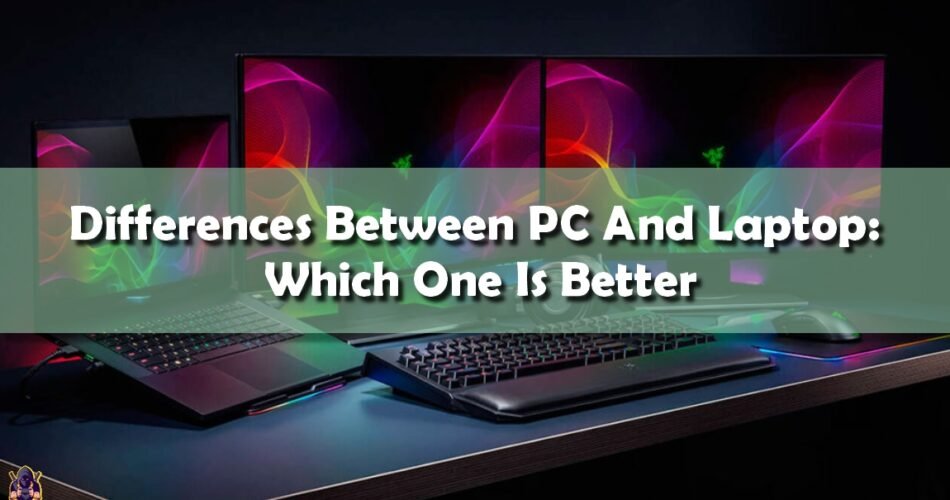Laptops and desktop computers have many things in common, but let’s focus on what makes them different.
A desktop computer is much bigger, heavier, and must always be connected to the mains, so it must stay in one place. A laptop, on the other hand, has a battery that allows it to be used even when it is not plugged in. They are light and small, which allows them to be carried everywhere.
In a laptop, the keyboard, monitor, and computer case are all combined in one. In desktop computers, the monitor, mouse, and keyboard are separate from the main computer case.

The Main Difference Between Desktop and Laptop
The biggest and most noticeable difference is the Desktop needs basic external devices to be fully functional, whereas the Laptop has all necessary devices built-in, making it the most portable.
Mobility
- A Desktop stays in the office or home and needs the computer terminal to be connected to an external monitor, keyboard, and mouse; whereas the Laptop has the built-in components and thus easily transported as one complete device that can be used in most environments.
Power
- The Laptop can run off AC power, batteries, or mains power, whereas the Desktop can only run off the main powers. It is not manufactured for any battery use.
- The Laptop battery has improved over time, and can last up to several hours, depending on how much processing power is being used and keeping WiFi or Bluetooth connections open, increases the battery power consumption.
Speed
- Although the Desktop and the Laptop are becoming more equal in terms of speed and performance specifications, the Desktop still remains as the more powerful choice for activities such as gaming and video production.
Buying a Gaming Laptop with similar specs to a Gaming Desktop would be at a much higher price than a Gaming Desktop.
- If the computer is needed for basic office processing, internet usage, and photo viewing, then a standard Laptop would be perfectly suitable.
Specifications
Generally, Laptops are known to have lower specs than Desktops, as there is a compromise on size and portability, vs performance and speed.
Screen size
- Desktop monitors can vary from small 15 inch screens to larger ones such as the 34 inch. Laptops have built-in screens which also have varying sizes.
- The larger the screen, the larger and heavier the Laptop, however if a small Laptop is purchased for easy mobility, it can be connected to a larger external monitor if possible.
- If connecting an exteral monitor to a Desktop computer that permanently stays in one place, then the size of the monitor would not be a restrictive factor as it is setup once and not necessarily moved so the weight is not an issue.

